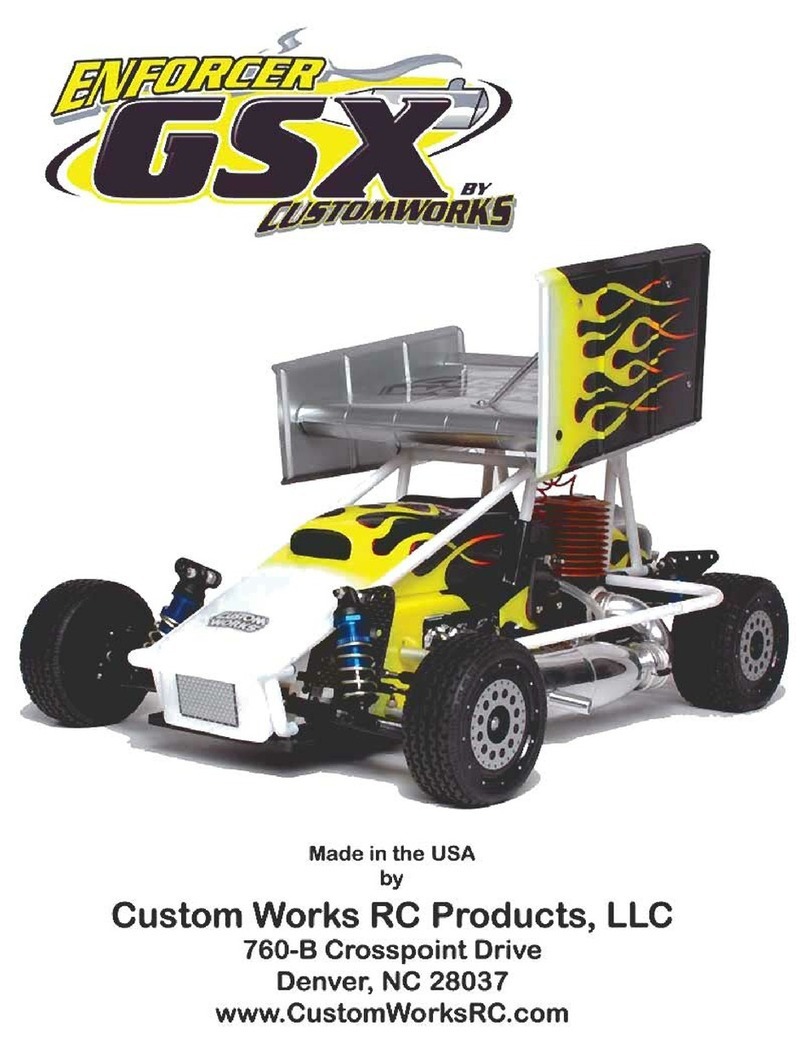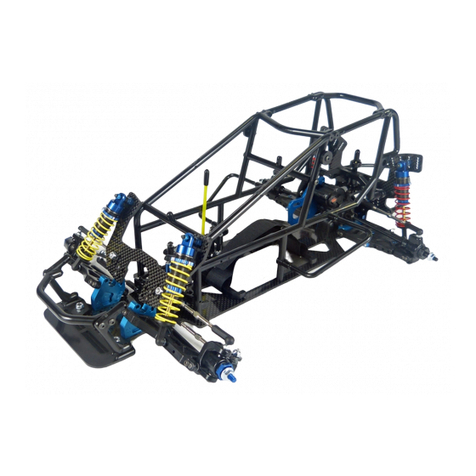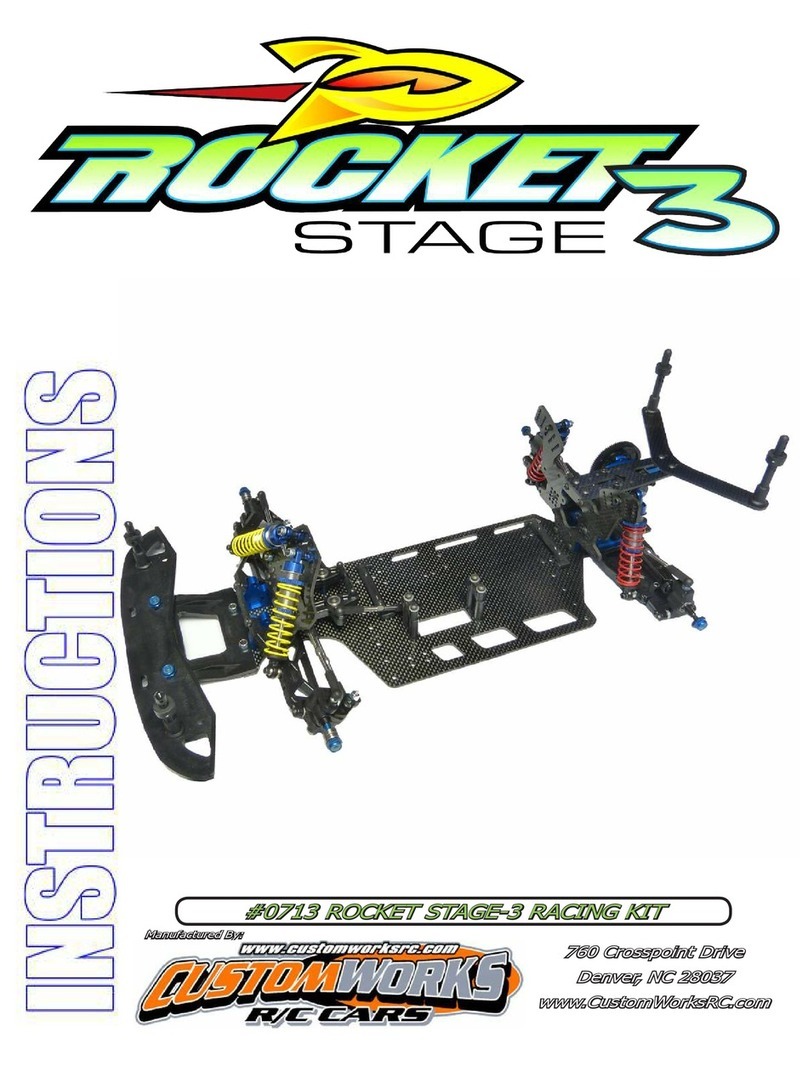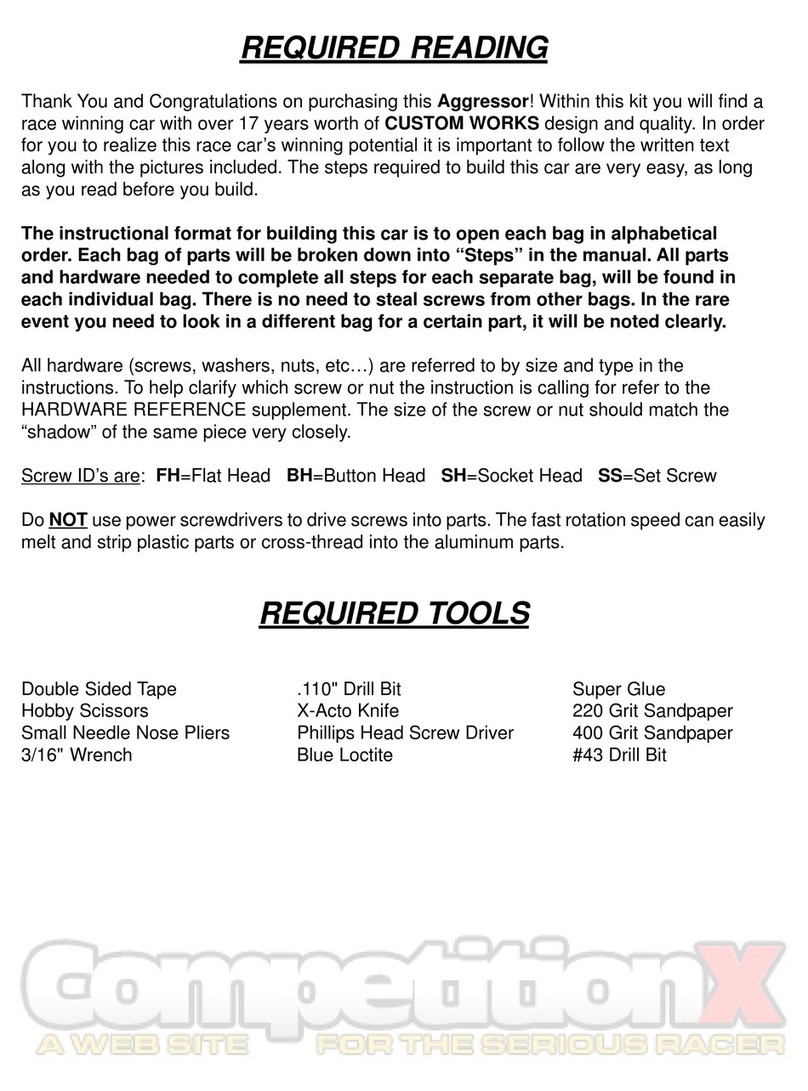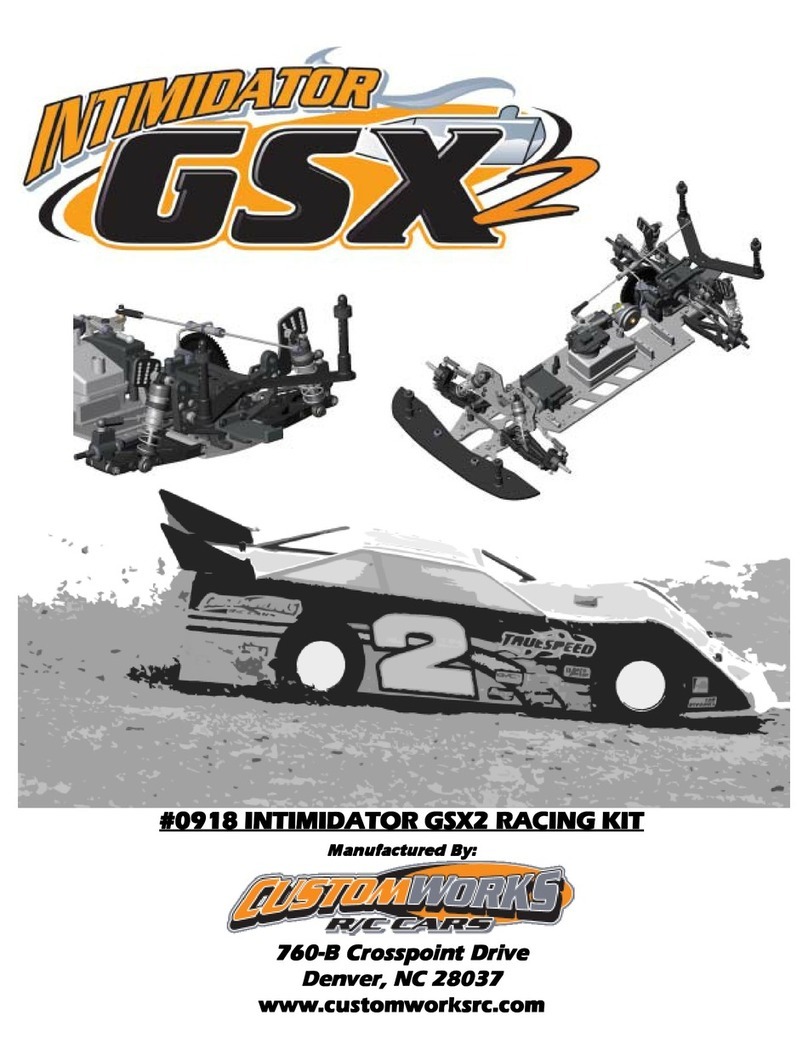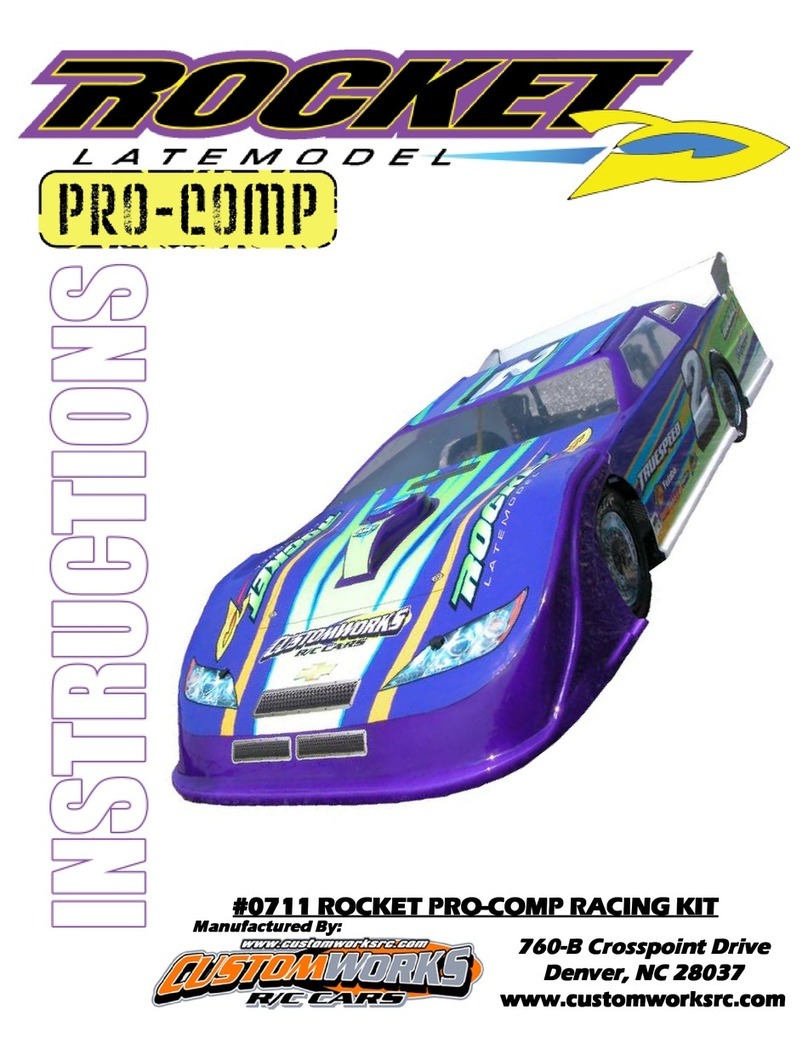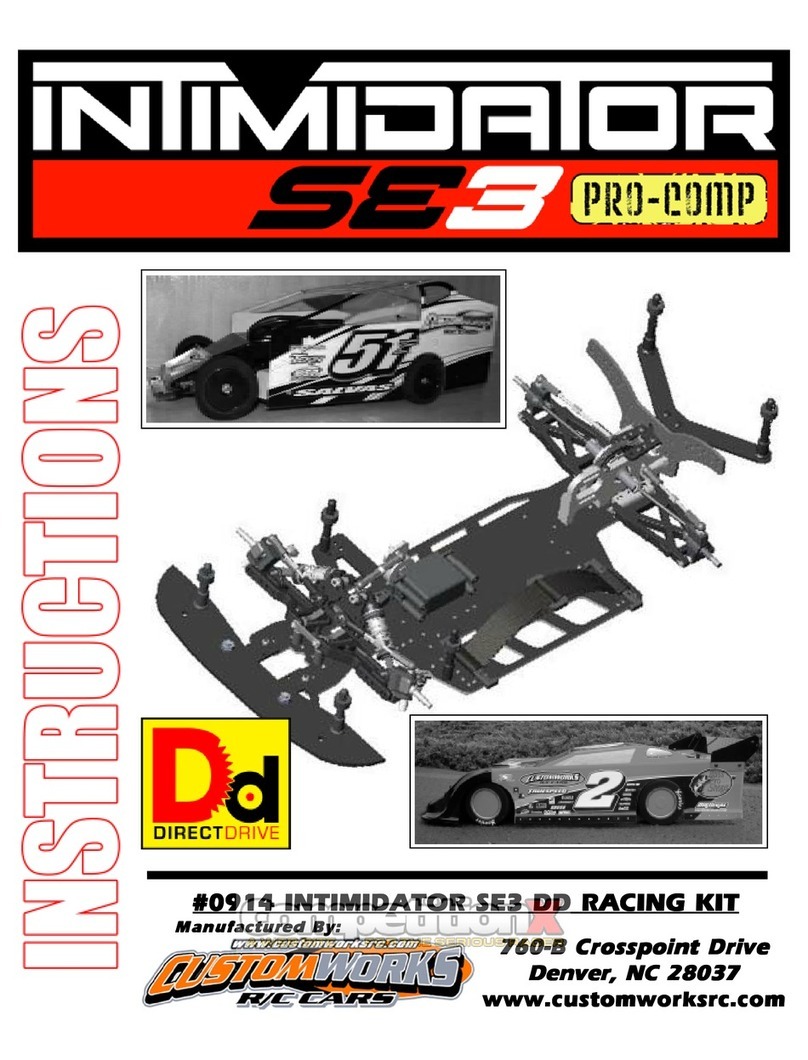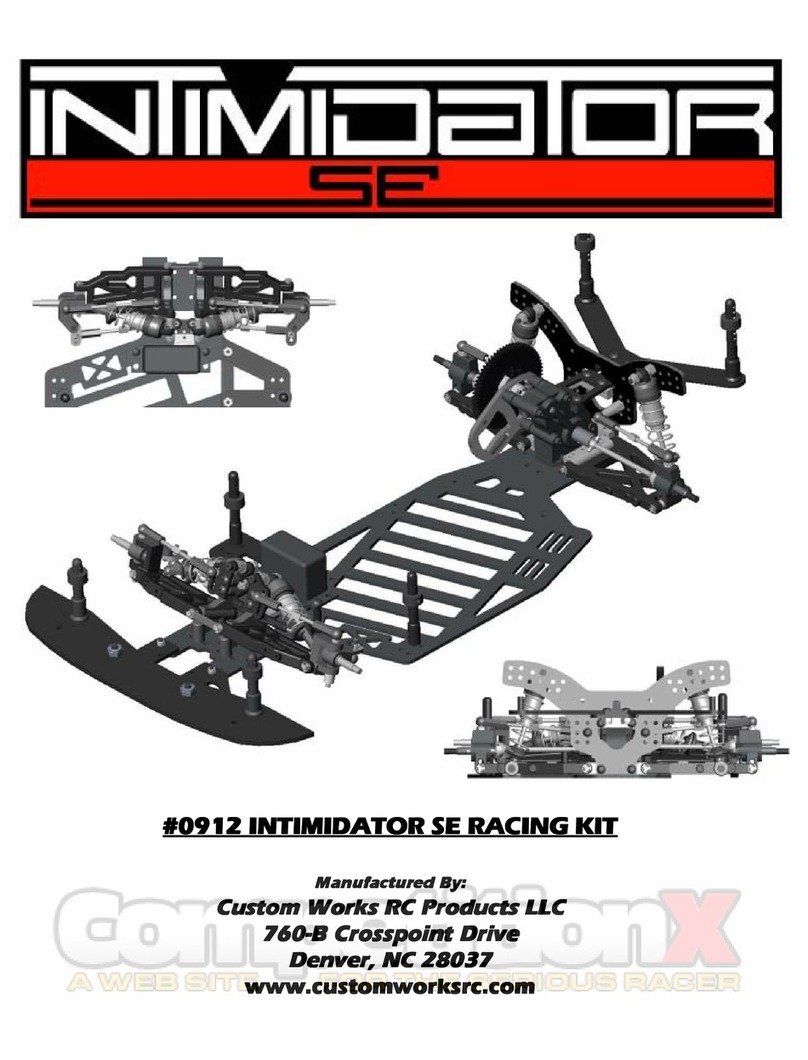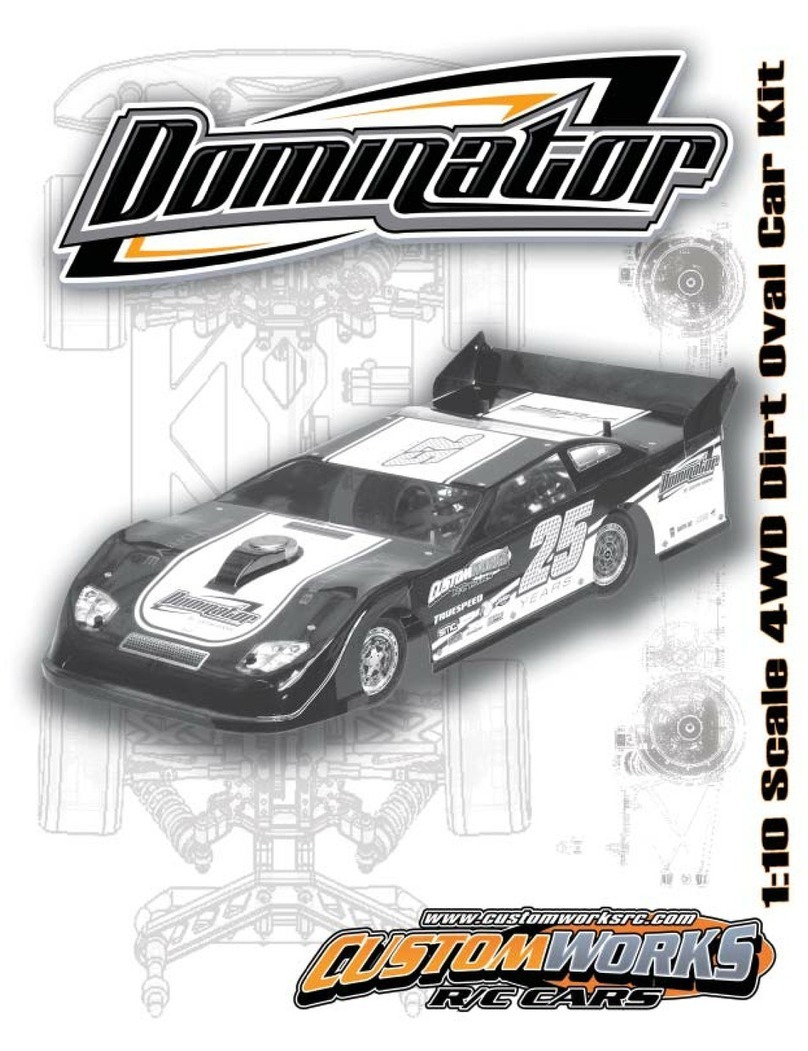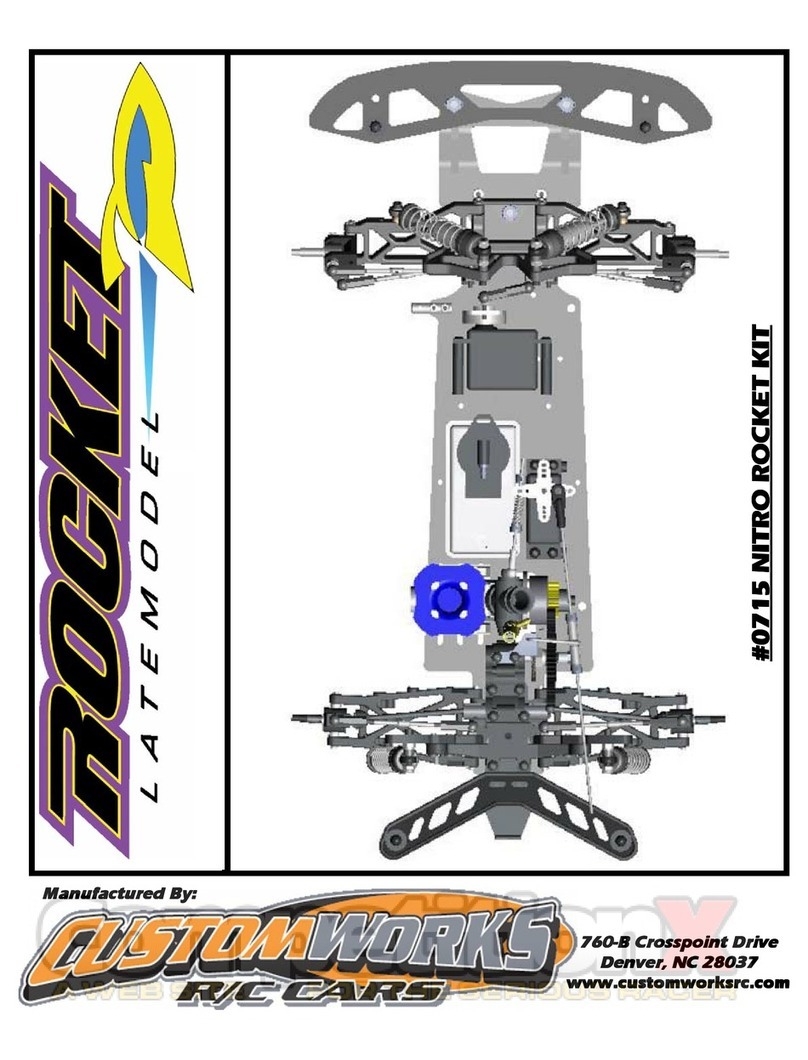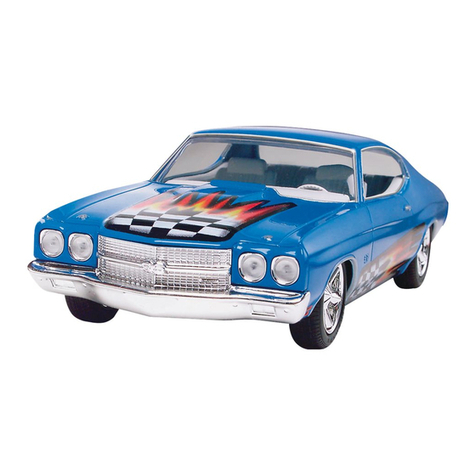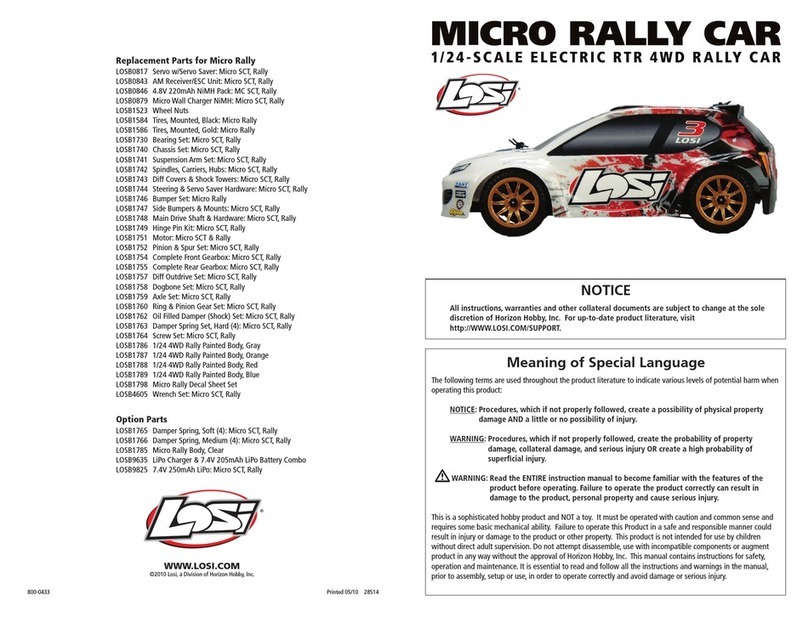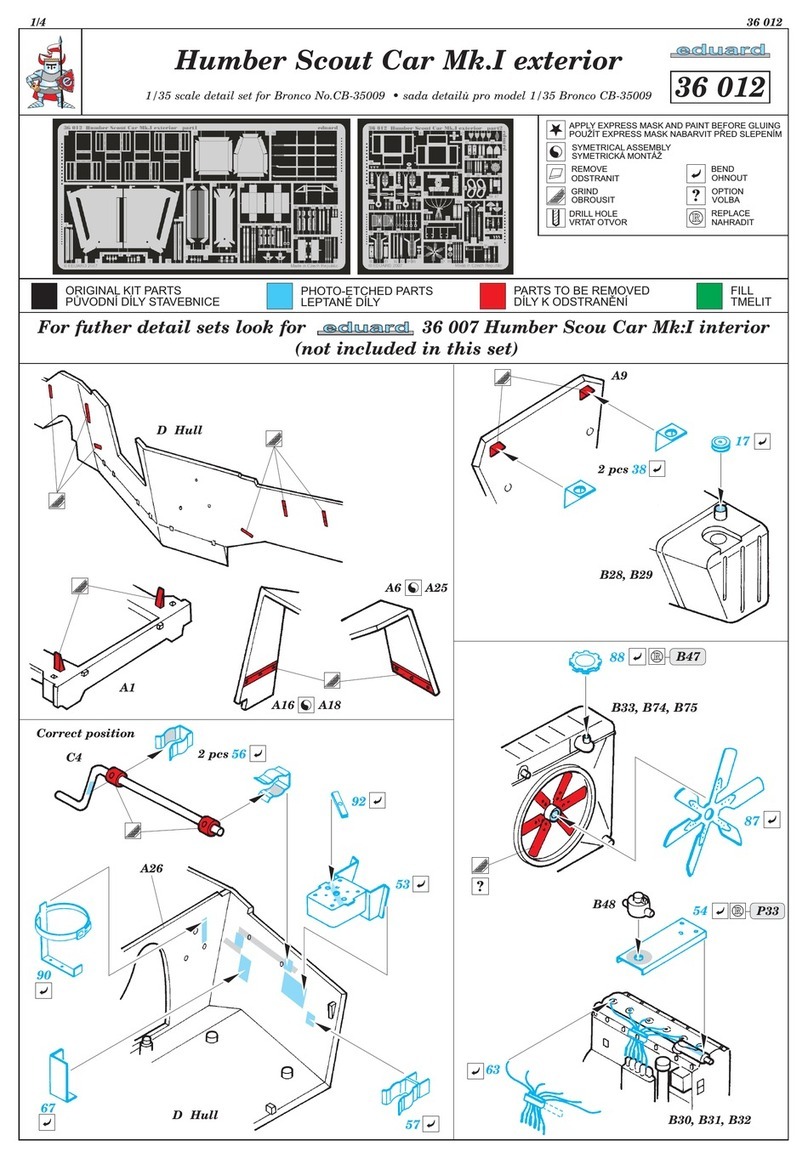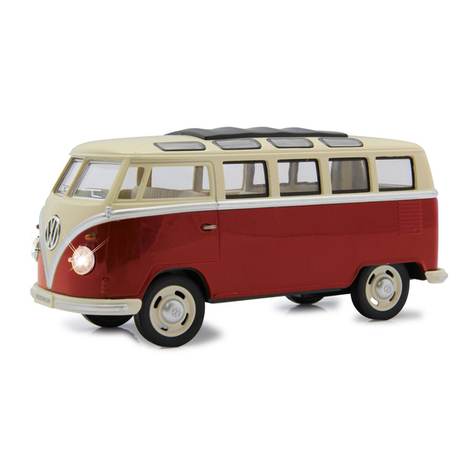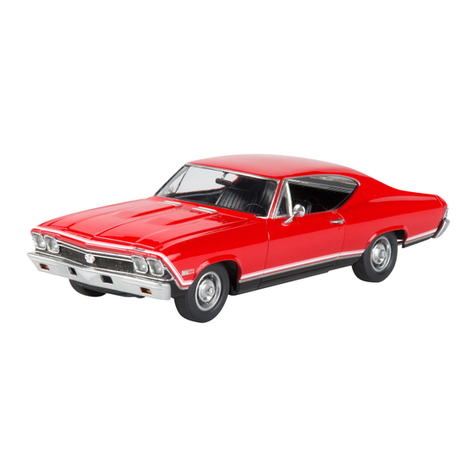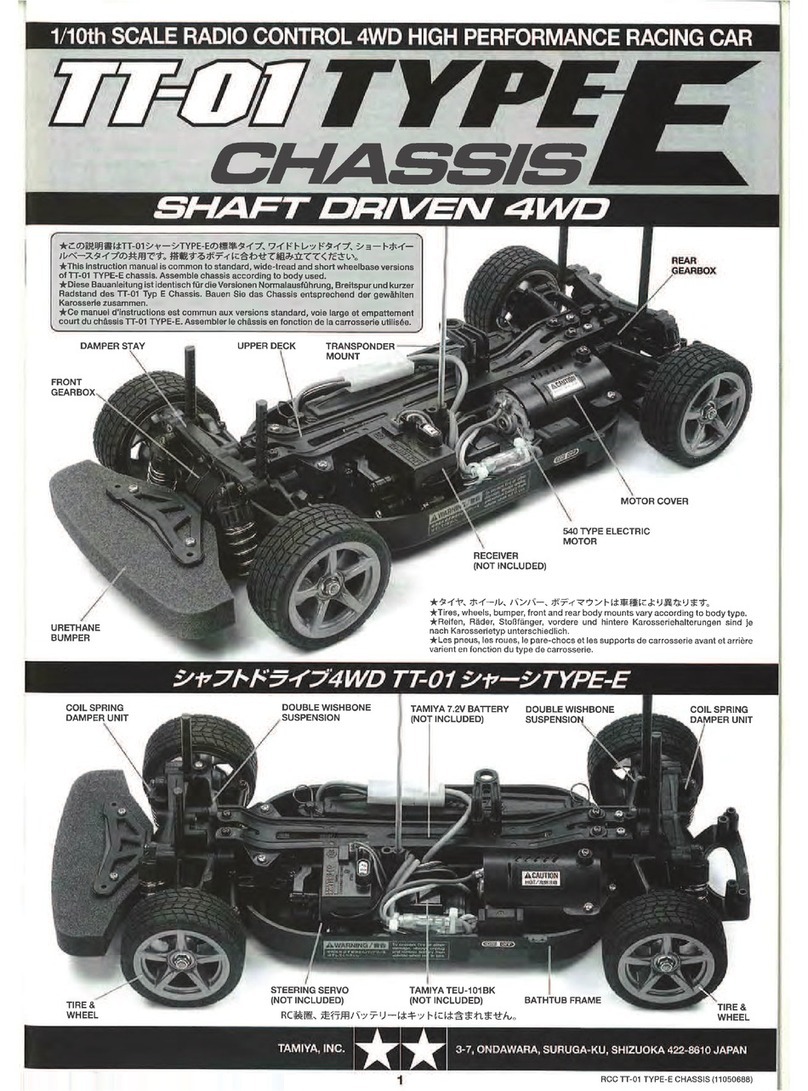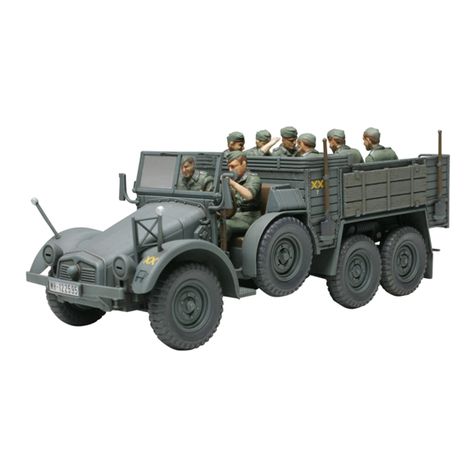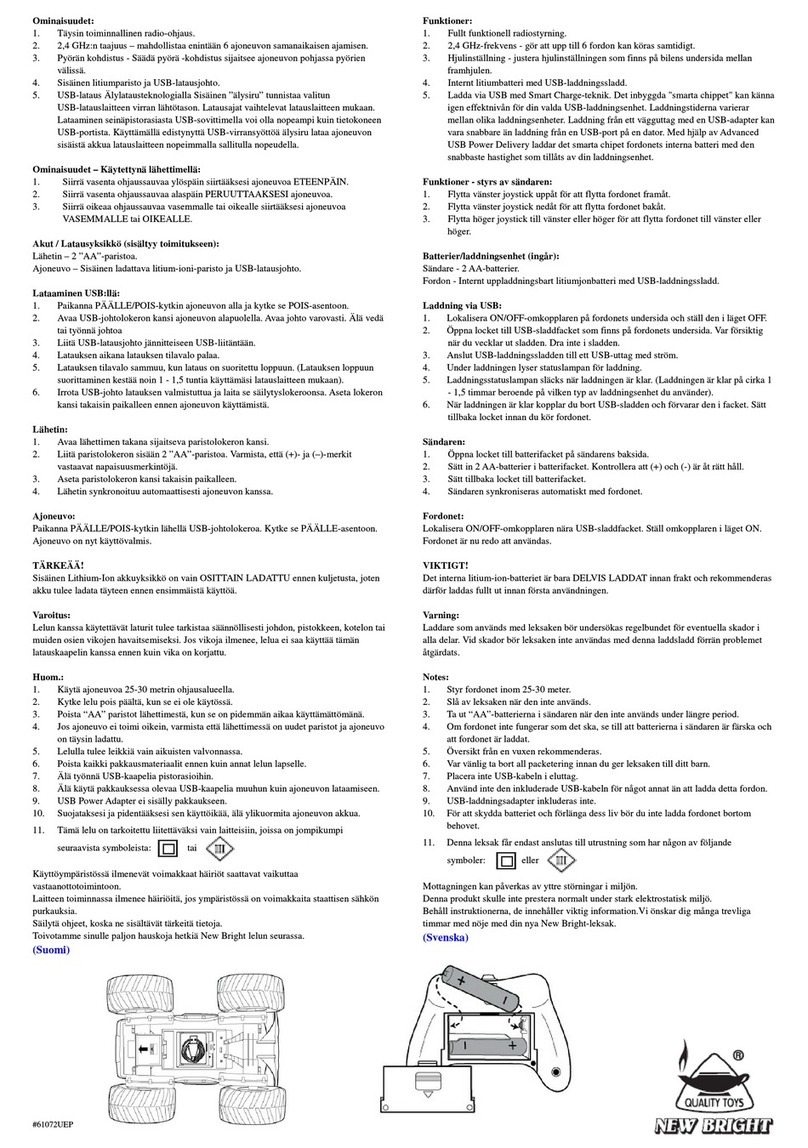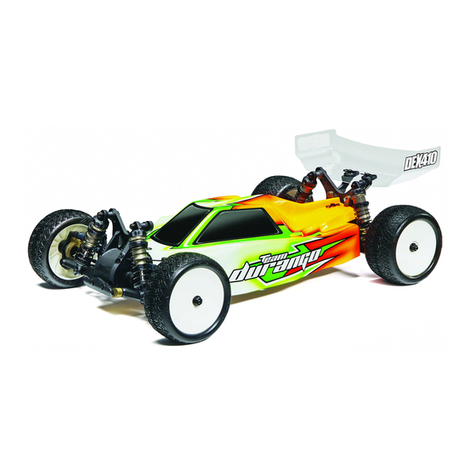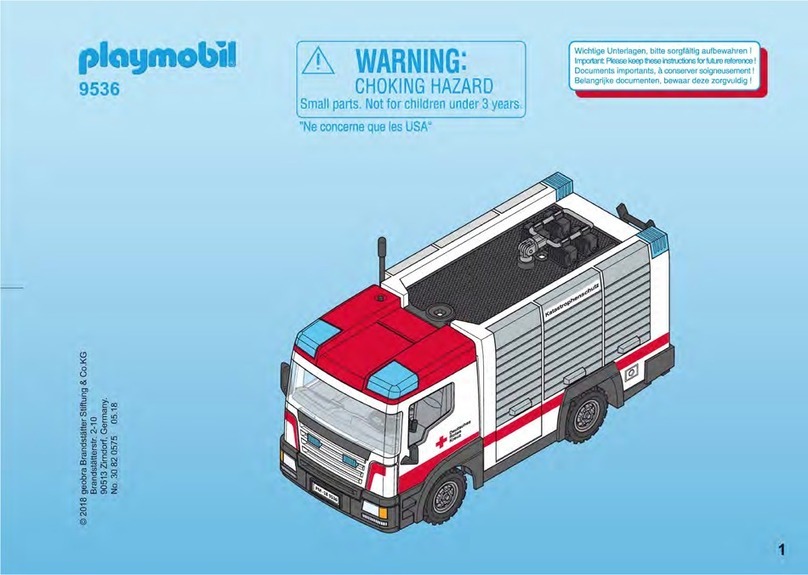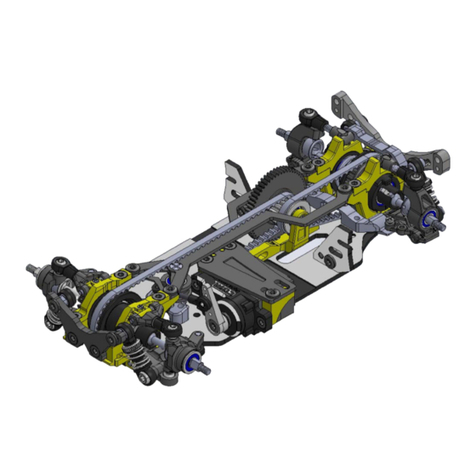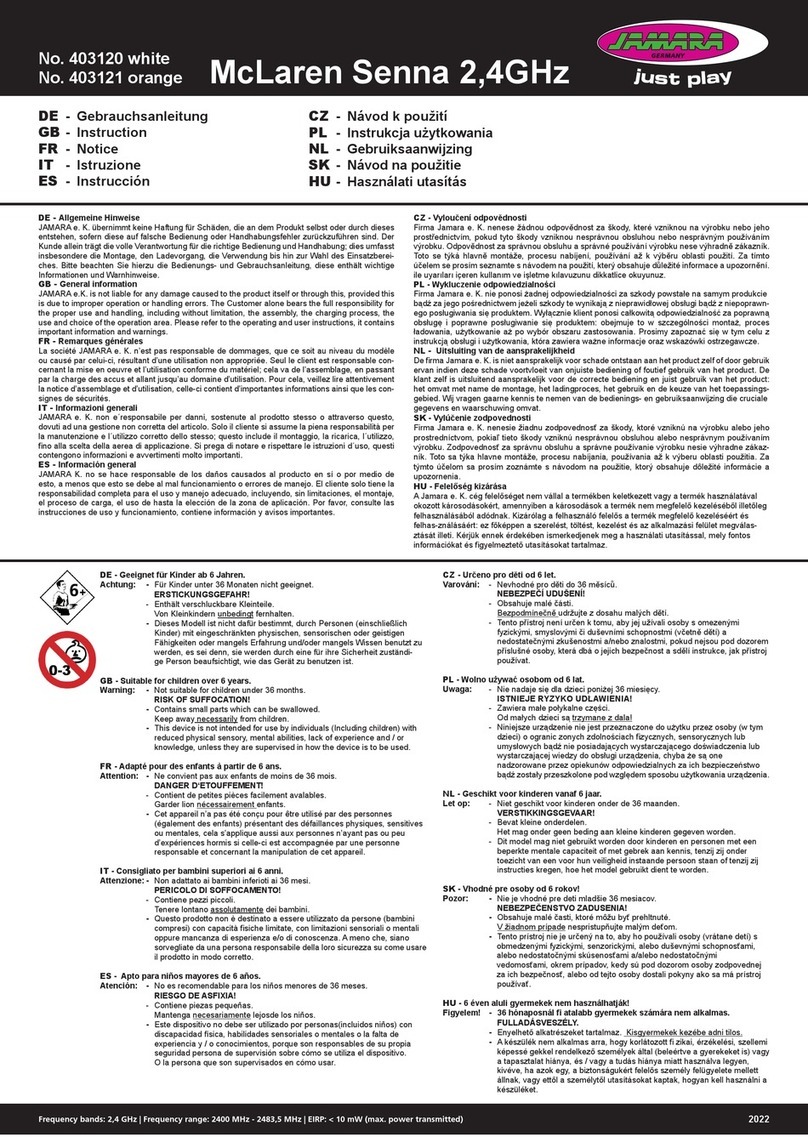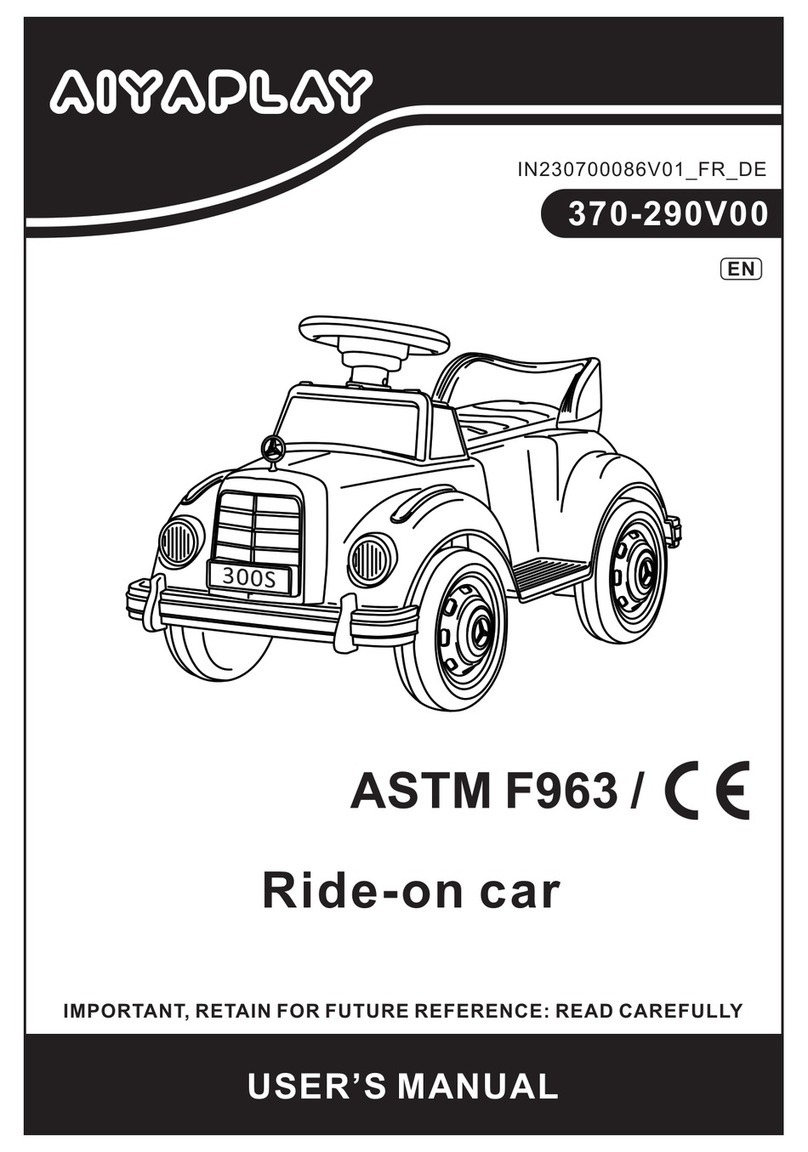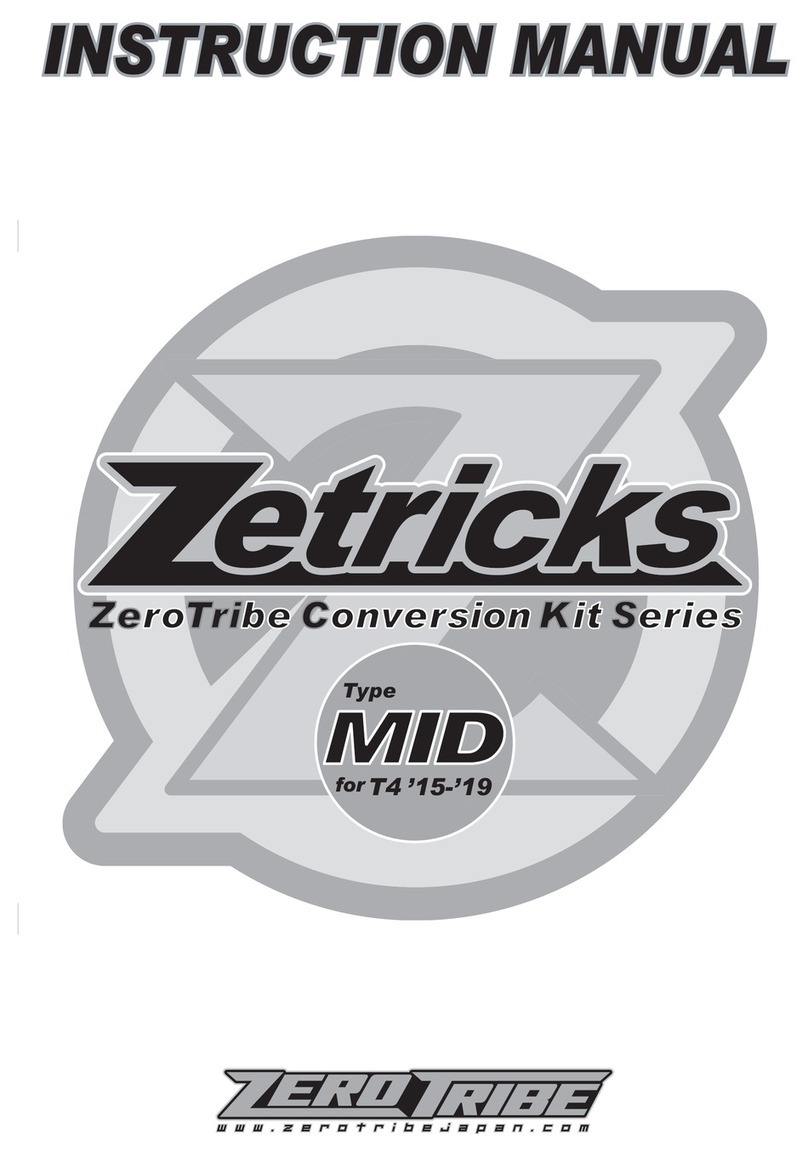
REQUIRED READING...UNDERSTAND THIS MANUAL!
Thank You and Congratulations on purchasing the ENFORCER G6 DD! Within this kit you will nd a race winning
car with over 28 years worth of CUSTOM WORKS design and quality. In order for you to realize this race car’s
winning potential it is important to follow the written text along with the pictures included. The steps required to
build this car are very easy, as long as you read before you build.
The instructional format for building this car is to use the “named” bag titled at the top of each section. Each
section will be broken down into “steps” thru the section . The bag containing the chassis holds a variety of
unique parts for your kit. Parts and hardware needed to complete each step will be found in the individual
“named” bag plus the few unique items from the chassis bag you may need for that particualar step. All parts are
referred to by their replacement part number in the instructions.
Considering the various dirt or clay surfaces that Dirt Oval cars are raced on today, the Enforcer has been
designed to be competitive on high bite and well groomed clay tracks with foam racing tires. The instructions
will build the kit using the most verastale set-up Custom Works has found in testing on different types of tracks,
however there are various other suspension congurations available to you that you may nd more suitable for
your local track. For updates and more proven set-ups login to CustomWorksRC.com or check out our video’s on
our YouTube channel.
BUILDING TIPS...
-Parts are made with tight tolerance and held to the side of a “snug” t as wear is expected over time. Try as we
may, occasionally a burr may remain in a part and t more tightly than desired. It is ok to use 400 Grit Sandpaper
or a .125” drill to SLOWLY relieve a part from time to time. Suspension components should always pivot and swivel
freely but not sloppily.
-Using some type of thread locking uid is suggested for all parts where metal screws thread into other metal parts.
We suggest using a lite setting strength thread lock for the reason you may want to take the screw out one day.
Remember it only takes a very small amount to secure the screw.
-Do NOT use power screwdrivers to drive screws into parts. The fast rotation speed can melt and strip plastic parts
or cross-thread into the aluminum parts.
-Lightly sand the edges of graphite pieces using a medium grade sandpaper to avoid splinters. Run a thin bead of
Super Glue around the edges to give pieces greater durability.
SUGGESTED TOOLS
400 Grit Sandpaper Wire Cutters Blue Loctite
Hobby Scissors X-Acto Knife 3/16” Wrench
Small Needle Nose Pliers Phillips Head Screw Driver
HARDWARE GUIDE
-Use the hardware below to help identify the appropriate screw to use throughout the manual.
